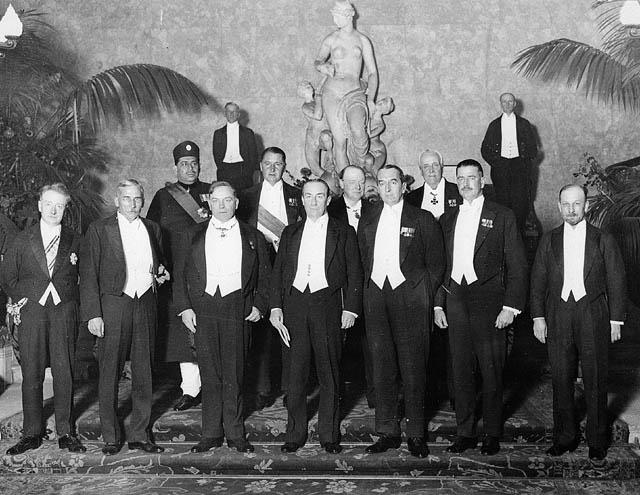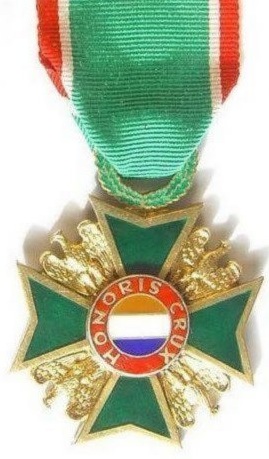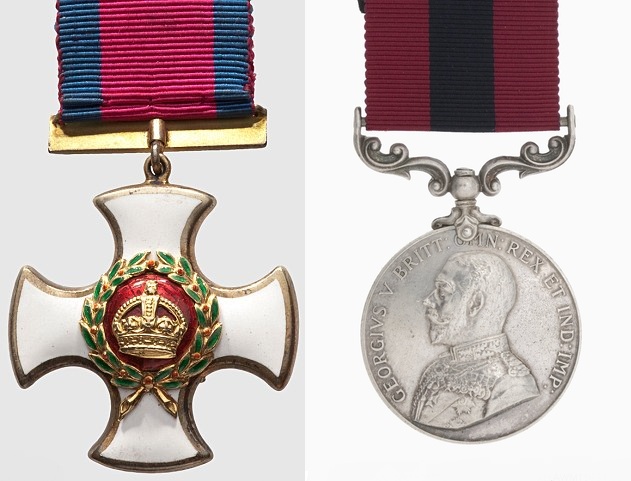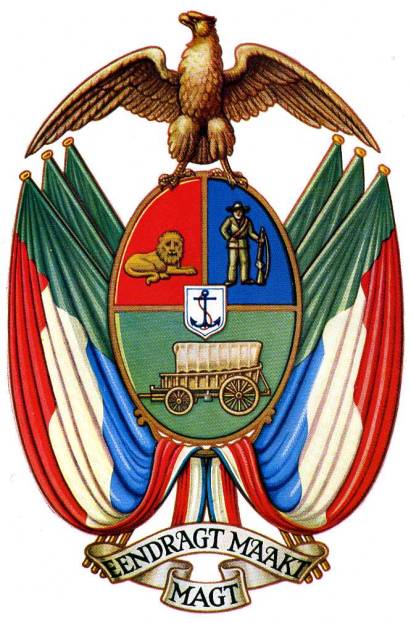The Honoris Crux was a decoration of the South African Defence Force (SADF) between 1952 and 2003. The history of this prestigious decoration for bravery serves as an example of how symbols such as medals reflect the changing political and military circumstances of a country, as discussed in this two part blog.
In 1910 the Union of South Africa was formed as a dominion of the British Empire, amalgamating the four British colonies of the Cape, Natal, Orange River and Transvaal. Only eight years prior, the latter of these two colonies were the independent Boer republics of the Oranje-Vrijstaat (Orange Free State) and Zuid-Afrikaanse Republiek (South African Republic). Throughout the 1920s there was a growing aspirations of greater autonomy in many British dominions such as Canada, Australia, New Zealand and South Africa. The dominions were distinguished from colonies by the fact that they were settled by British subjects. These dominions had attained levels of political development and autonomy that were sufficient for self-government. During the Imperial Conference of 1926 in London, the various dominions and Britain were tasked with the “consideration of fundamental principles affecting the relations of the various parts of the British Empire”. In a subsequent declaration (known as the Balfour Declaration), the Imperial Conference recognised that the dominions:
“are autonomous Communities within the British Empire, equal in status, in no way subordinate one to another in any aspect of their domestic or external affairs, though united by a common allegiance to the Crown, and freely associated as members of the British Commonwealth of Nations”

The representatives at the 1926 Imperial Conference. The Prime Minister of the Union of South Africa, Gen. J.B.M. Hertzog is second from left.
The Balfour Declaration was followed in 1931 by the Statute of Westminster, which formally renounced the British parliament’s legislative authority over the dominions and established authentic self-government in those places.
In South Africa of the 1930s the the emergence of Afrikaner nationalism as a political force had important consequences in the context of the Statute of Westminster. First, the Afrikaner nationalist government would be able to more effectively pursue domestic policies dealing with the coexistence of various races and second, the achievement of total independence from the British Empire and national sovereignty now appeared to be an attainable goal. In time, both these issues would come to dominate South African politics – first, in 1948 after the National Party won the general election based on the policy of racial segregation (apartheid) and in 1961 when South Africa was proclaimed as in independent and sovereign republic, no longer constitutionally part of the Empire.
The Honoris Crux (HC) was first instituted in 1952. Barely four years had passed since the watershed election of 1948 in which Afrikaner nationalism had triumphed, placing South Africa on a new political trajectory. Buoyed by a new political spirit and self-confidence, Afrikaner culture experienced a renaissance, with the creation of new symbols, the cultivation of a new historical-cultural narrative and national consciousness, and the development and institutionalisation of the Afrikaans language and Afrikaner ethos in all spheres of South African society. As an important component of national symbolism a unique system of South African honours, awards and decorations were also required as part of this renewal. Such awards are, after all, important emblems and representations of national identity and achievement. Up to that time South Africans (as subjects of the Empire) were eligible for British honours and military decorations, and an indigenous system of national awards and honours (both civil and military) would be an important symbolic step to indicate growing separation from Britain and the Empire. Indeed, it would be incongruent to acknowledge acts of bravery by South African soldiers, carried out in the interests of South Africa, with ‘foreign’ awards and decorations. In this regard, the authoritative and excellent book titled South African Orders, Decorations and Medals, relates that:
“In 1948 the Minister of Defence, Mr. F.C. Erasmus, issued instructions through the then Chief of the Air Force, Brigadier Durrant, to Major George van Rhyn, the Military Heraldic artist of the SADF, to design an ‘own’ set of awards based on the nomenclatures given by the Minister. Major van Rhyn proceeded with the designs for awards (and new uniforms) … The post-nominal titles were specifically designed to be the same in English and Afrikaans”
The result was a comprehensive and truly indigenous set of honours and awards for the Union Defence Force (UDF, later known as the SADF) reflecting the South Africa’s growing political autonomy and unique national identity. These awards replaced those of Britain, for which South Africans had hitherto been eligible. One of the military awards that emerged as part of this new system of honours was the Honoris Crux, the name being Latin for Cross of Honour. The Latin naming was no-doubt chosen in order to maintain the parity of language between English and Afrikaans, as noted in the extract above.

The 1952 Honoris Crux (HC)
The HC was awarded to members of the armed forces who without thought of own safety and through personal courage and determination performed a gallant act or deed in action against an enemy in the field. The HC could be awarded to all ranks. After the Louw Wepener Decoration, which was now the South African equivalent of the Victoria Cross and never bestowed, the HC was South Africa’s second highest award for gallantry. Recipients of the Honoris Crux were eligible to use the letters “HC” after their names.
When comparing the Honoris Crux to the British awards and decorations of the time, it would have ranked lower than the Victoria Cross and roughly equivalent to the Distinguished Service Order (DSO, awarded to officers) and the Distinguished Conduct Medal (DCM, awarded to other ranks). The South African Honoris Crux, however, did not discriminate between officers and other ranks, and all deserving members of the armed forces were eligible to receive it for acts of bravery.

The Distinguished Service Cross awarded to officers for gallantry and the Distinguished Conduct Medal for other ranks reflected the divisions in status and class prevalent in the British Armed forces and society of the 19th century.
The Honoris Crux medal itself is takes the form of a silver gilt maltese cross of which the green enameled arms are separated by four eagles. This design is similar to that of the famous Pour le Merite order of Prussia, which was commonly known as the “Blue Max”. The medal is attached to the ribbon by a laurel wreath, which is traditionally a symbol of achievement and success. The words “Honoris Crux” appears in the central roundel of the cross, along with the orange, white and blue bars of the former South African flag (1928-1994).
The design of the award is somewhat perplexing, since aside from the national colours in the central roundel, no uniquely national South African symbols are incorporated into the design. Similarly, the predominant red and green colours of the medal and ribbon are not traditionally associated with South Africa. A likely reason for this is that the design of the Honoris Crux was, in fact, almost sixty years old at the time of its adoption in 1952. It is recorded that in the late 1890s the president of the Zuid-Afrikaanse Republiek (mentioned previously), Paul Kruger, proposed the establishment a system of honours for the Boer Republic. His suggestion was widely opposed by the egalitarian-minded boer citizens, who felt that such a system was reminiscent of imperialist grandeur and monarchy, particularly that of the British Empire, which they regarded with scorn. Prototype design drawings of the proposed awards were completed at Kruger’s request, but subsequently abandoned after the proposal met with opposition. Thus, when Major van Rhyn was tasked with commencing work on designing new awards and decorations in 1948, one the design drawings of the rejected ZAR orders was used for the Honoris Crux decoration. Given that the national colours of the erstwhile ZAR featured green, red, white and blue, the oriigns of unusual palette of the 1952 HC is better accounted for.

The coat of arms of the Zuid-Afrikaanse Republiek. Compare the colours and the prominent golden eagle to the design of the Honoris Crux

President Paul Kruger of the ZAR. His presidential sash of green trimmed with red and white is virtually identical to the ribbon of the Honoris Crux.
Even though the Honoris Crux was instated in 1952, the post-WWII years represented a quiet period for the South African armed forces. More than twenty years would pass before the HC was first awarded in 1973. However, within a year, five more crosses would be bestowed – all to members of the South African Air Force for their actions during the South African Border War in which the armed forces fought insurgents in South-West Africa. Behind this initial dormancy and subsequent rapid bestowal of the HC lies a chapter of South African history marked by incisive political change and the rapid expansion of the military operations as part of an escalating conflict. The mid-1970s also saw the reform of the existing system of South African honours, medals and decorations. The Honoris Crux decoration was also reconceived as part of this process and its important role in the military consciousness, which is discussed in the second part of this blog.